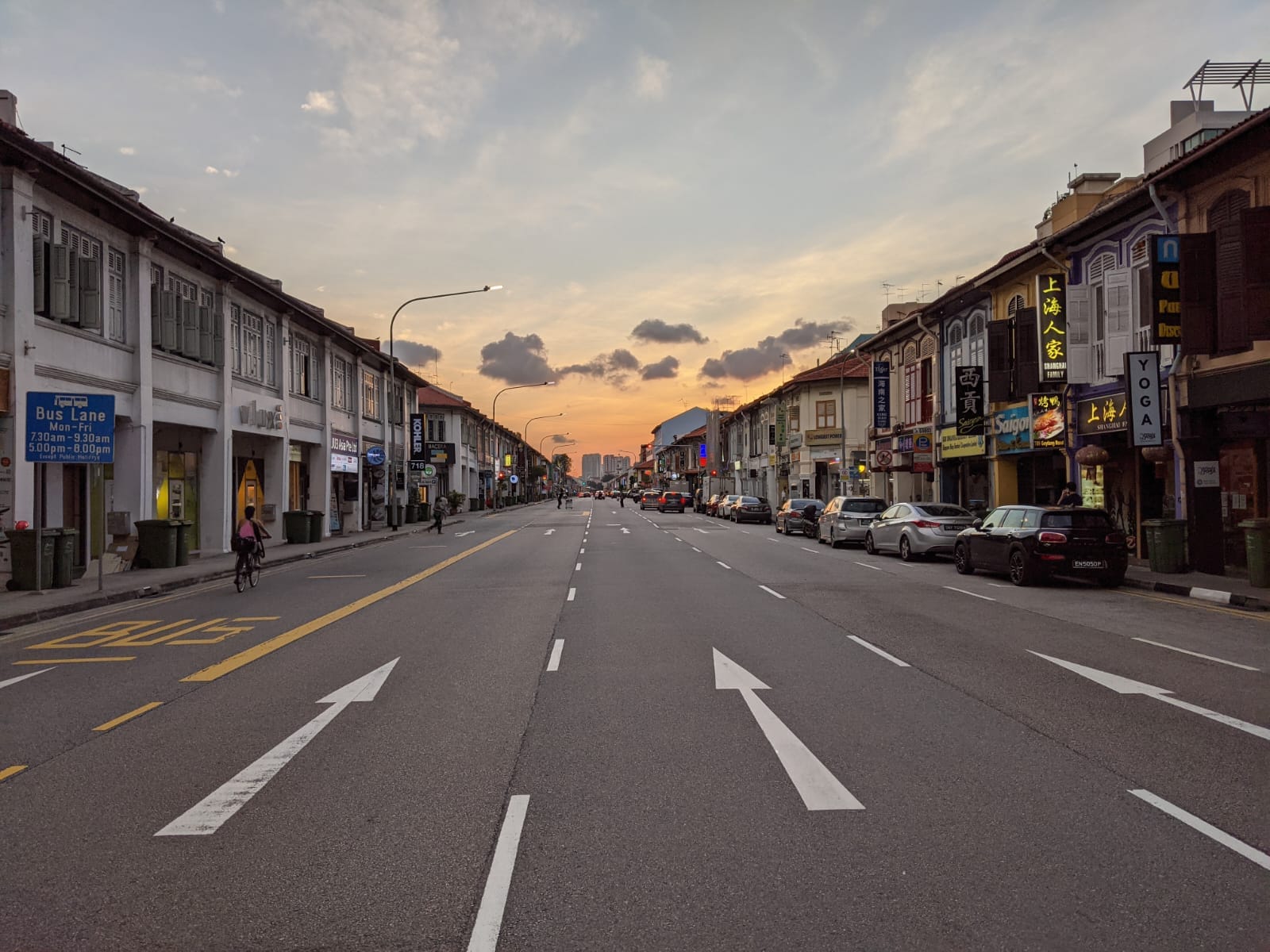So you've decided to become an expat in Singapore
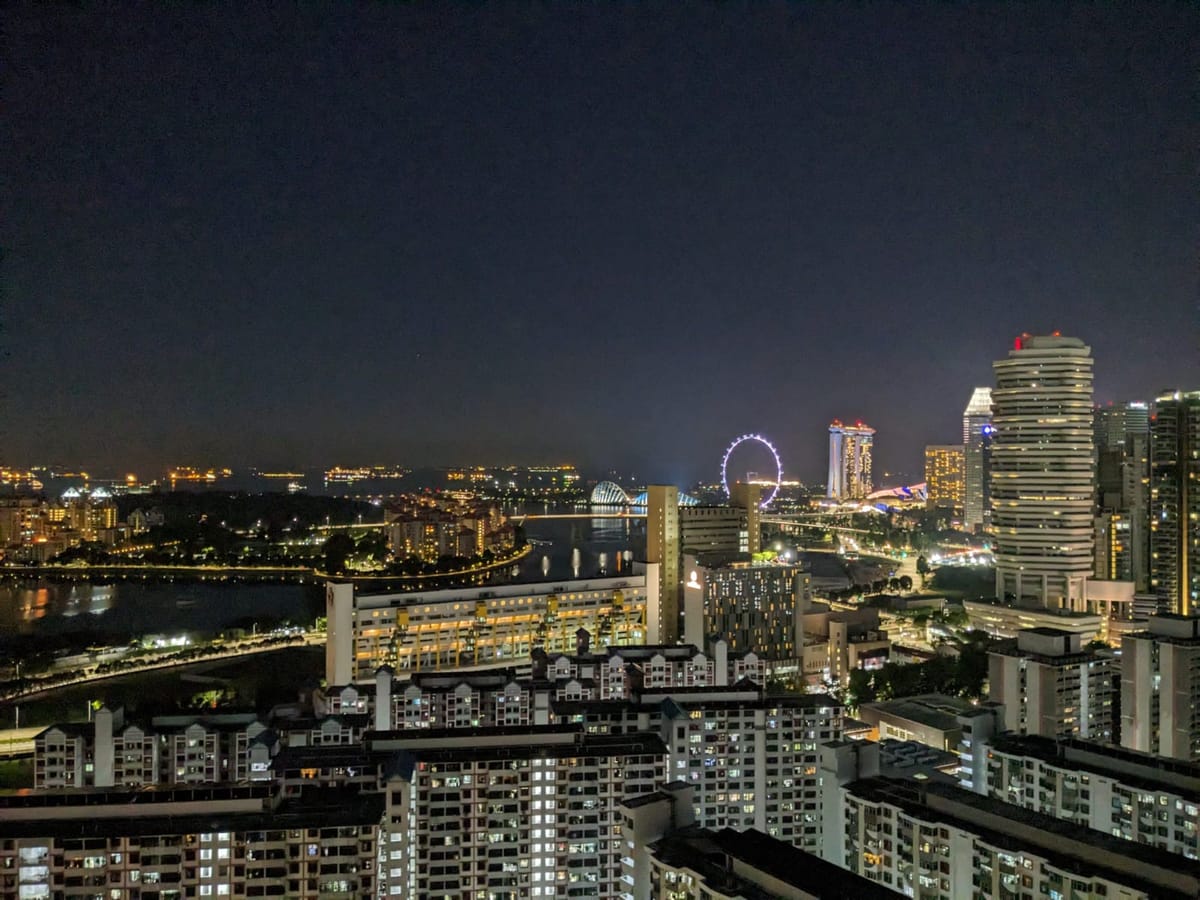
For expats, it is said that Singapore mixes East and West such that its learning curve is not too challenging but neither is it boringly familiar. An expat might readily acclimatise to living in Singapore before moving onto other countries more culturally distant from home, or could very well settle into a comfortable Singaporean life.
I lived in Singapore from April 2021 to August 2024 and had a blast. However, there are a few things I wish I'd known before I made the move. If you are considering your own relocation to Singapore, allow me to guide you, gentle reader, through my recommendations, cautions and pearls of wisdom.

Enjoy Singapore's world-class food and coffee
Early in Singapore's history, food vendors dotted the roads and hawked their delicious wares. Then, from 1971 to 1986 the government waged a multi-pronged policy to cleanse the streets of food waste - which meant no street food vendors. The government could not just relegate these hawkers to the unemployment queue; however, because Singapore didn't have unemployment insurance, but more importantly because food is an integral part of Singapore's intangible cultural heritage. So these hawkers were concentrated in Hawker Centres where they could tout their tasty fare under the close supervision of health inspectors. To sweeten the deal, most hawkers received discounted rent and ingredients when they moved into the centres. These input subsidies are still in effect, which makes hawker food very affordable for diners and ensures that anyone in Singapore can enjoy a good dinner.
The upside of this policy is that you, a jet setting expat, can enjoy world-class food for very little money. You may just need to orient yourself at first.
- You'll learn how to order in no time. Watch a few locals order and you'll get the gist. Say hi uncle/auntie, gesture at the food you want and attempt to say its name, respond if they ask you want chili, then point at the ground and say "have here" or point anywhere else and say "take away". One day you'll learn to spice your order with an "Ah!" or "Eh!", such as "Kopi C Kosong, hot one ah!", but that will come with practice.
- Pay with cash or a QR code. All the major banks in Singapore have a QR code app that's some variation of PayLah, PayNow, PayAnyone etc. but they all do the same thing. You scan a QR code with the app and you wire money from your bank account to the merchant. Otherwise you pay cash. You cannot tap your bank card, it's just not a thing at Hawkers.
- Not all Hawker Centres are good, but many are great. I only sampled a few centres during my brief time in Singapore, but based on my limited experience there's a range of quality between and within centres. Sharing intel on who's chilli crab is hot and who's not is a classic lunch time topic. Finding a hidden gem is almost as spicy as the dish itself. I personally would put Old Airport Road Centre high on my list, their vendors do great fried kway teow, hokkien mee and lor mee (the 'mee' means noodles), as well as claypot rice and beancurd deserts. Hong Lim in the city is really good, I recommend the curry chicken noodles and the peanut pancakes. Golden Mile is great for deserts before or after a movie. Many foreigners will recognise Maxwell Food Centre from the 2018 documentary Crazy Rich Asians, but its food is overpriced tourist fare - avoid.
- Reserve tables with tissue. You'll often find tables at hawker centres and corner kopi stores have packets of tissues placed on them - this is the universal Singaporean signal that the table has been reserved. The owner of the tissues is most likely lining up to order while their paper nose blowers secure the table. Always carry a packet of tissues with you to reserve a table. Some people also use their business cards to reserve tables, but I've found this is to be less reliable than tissues. You can also leave your phone on the table, which isn't as crazy as it would seem because Singapore has very little petty crime, but it's still pretty crazy, so don't do this. Just use tissues.
- Learn to order kopi and teh. Kopi is coffee and teh is tea. There's a common slang for ordering kopi and teh that you'll need to learn. When you master this you know you are true local. But a strong word of warning - not just for kopi but for everything you consume in Singapore - reduced sugar is still too much sugar. I recommend you start out with a kopi or teh that is 'C kosong' or 'O siew dai'. If that's too sweet, switch to 'O kosong'. If it's not sweet enough, then try simple 'kosong'.
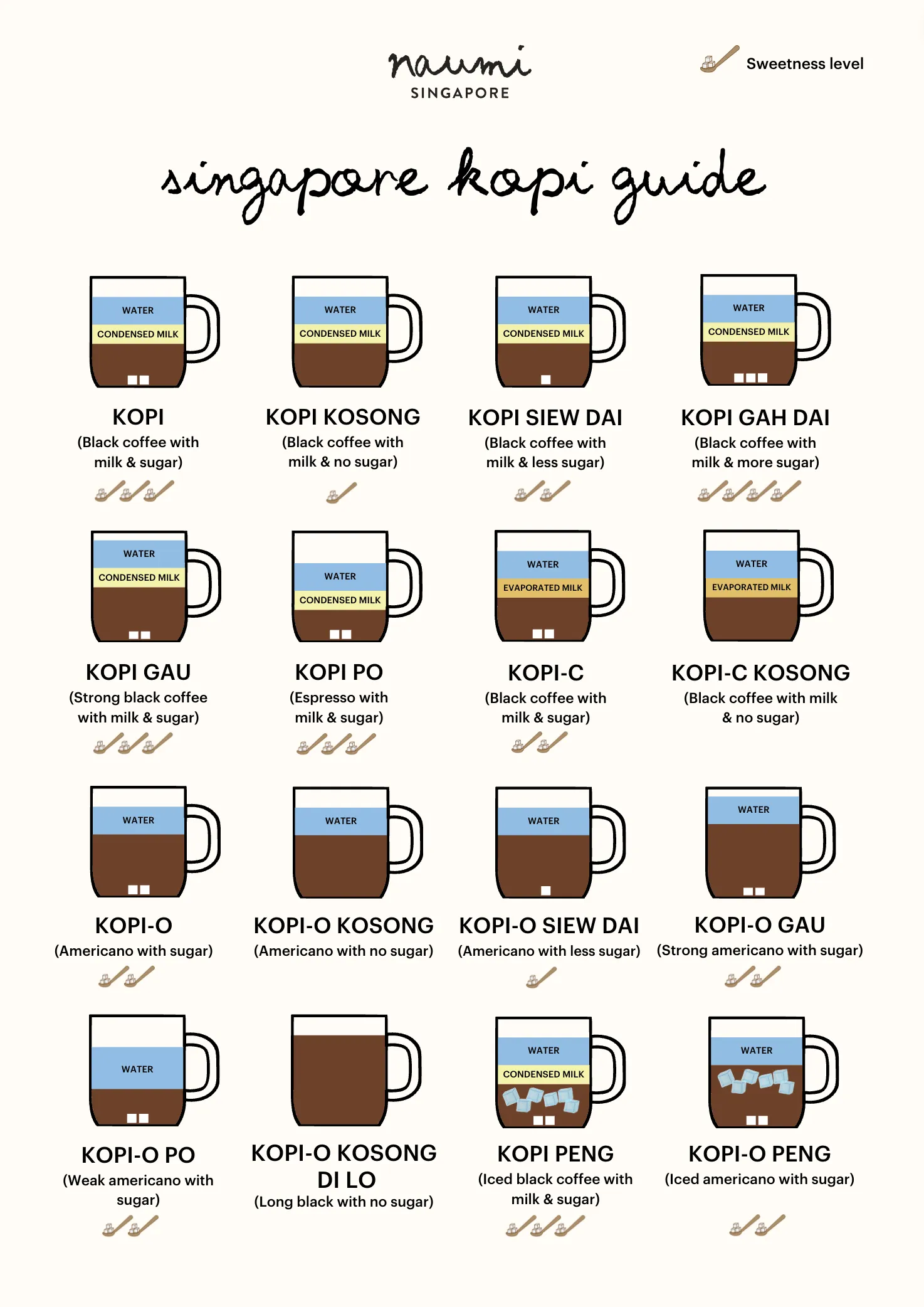
Not all great food is confined to hawker centres. I lived in Geylang which has some great places outside of Old Airport Road. I recommend: L32 Handmade Noodles, one of Geylang's minor institutions, I suggest you order the pork, sliced fish or the fish-ball with ban mian noodles (the house signature) served 'dry' but you can / should pour the soup into the noodles and as much chili as you're comfortable with. Down the road is Banh Mi Thit, a cheap and cheerful Vietnamese place, which is surprisingly rare in Singapore. Further up Geylang Road is Rochor Beancurd who do great soya drink, custard tarts and butterfly buns.
Outside of Geylang there's Merci Marcel all across the island, they're a good solid brunch and dinner place. Tiong Bahru Bakery is also spreading across the island and they're great for coffee and a croissant. Common Man is adding new venues and they all do great Australian-style coffee and brunch. Heng Chye Huat Hardware does excellent coffee. Apartment Coffee and Twenty Eight Cafe are close to each other an both do awesome coffee. Karasu Cafe is hidden away in a food centre but well worth seeking it out - if it's full the place next door is also great.
Travel often
Singapore's Changi Airport is one of the busiest airports in the world. It's also one of the best run. I've never been able to verify this, but I'm told that Prime Minister Lee Kuan Yew knew that stepping off the plane at Changi would be many visitor's first impression of Singapore. He wanted smooth operations, short queues and luxurious amenities to positively bejazzle them as soon as they stepped off the plane. I don't know how true that is (though LKY certainly did have a healthy interest in Changi), but at the end of the day you're going to use Changi often and you need to raise your expectations of what an airport can do.
- You don't need to arrive at Changi as early as you would for other airports. In any other country, I arrive three hours before international departure. However, at Changi, two hours before departure is very doable for any major carrier. One time I flew Fiji Airways in 2022 and that took over an hour to clear check-in. Other than that, I've never taken more than half an hour to go from arrival to pre-gate security.
- Remember to lodge your arrival card before you land. All arrivals in Singapore need to submit an electronic health declaration before they can pass through Changi immigration. This was rolled out during Covid but has been retained for broader health monitoring. It's certainly doable to lodge your form from the Changi immigration queue, but you'll have an easier time if you do this before your departing flight takes-off. I do mine while I'm lining up for check-in.
- To reach Changi by train is cheapest, Grab is cheaper, taxi is dearest. Singapore doesn't have Uber, it has a regional equivalent called Grab. All Singaporeans have Grab and you'll no-doubt get it soon after you arrive. Grab is very convenient, but, in terms of its getting you to the airport, Grab is the most expensive. Taxis are not as expensive as Grab but can take a tiny bit longer to arrive. When I've had heavy bags to check, I've caught taxis rather than Grab. If you have neither checked bags nor a pressing need to arrive quickly, then you should take the train. The East-West train-line goes to Changi and is crazy cheap, from Raffles place it costs only $2.07 SGD as of writing.
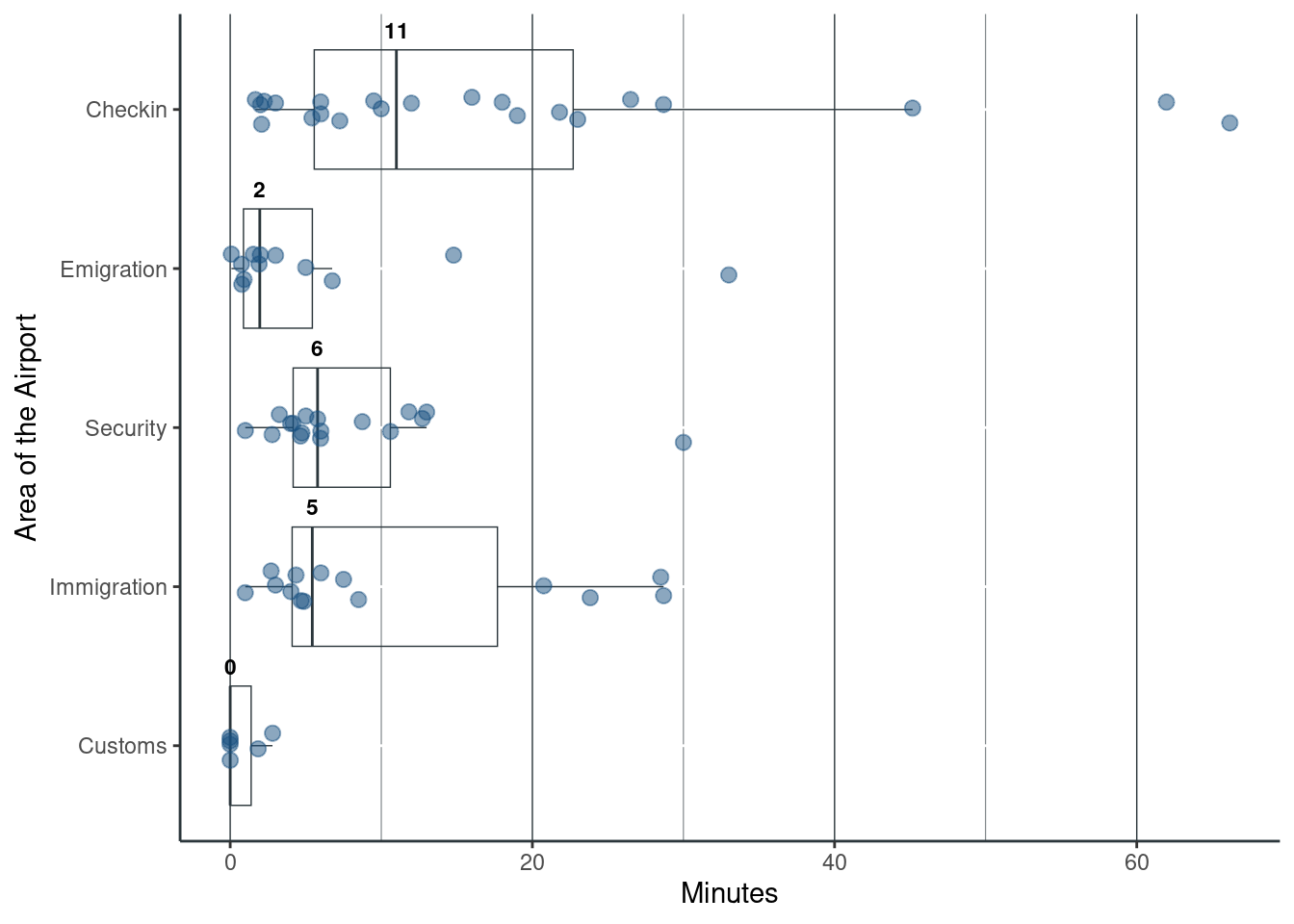
Should I ship my goods to Singapore?
You sure can, just note that international freight is surprisingly expensive. I got five quotes from movers in mid 2024 to move my stuff out of Singapore and into Europe. The minimum for each quote started at ~1.1 cubic meters and cost $1,800 - $2,200 SGD. However, if your work is paying for it, then you're leaving money on the table if you don't ship your stuff.
- Shipping can take a long time to reach your new home. The packed goods need to wait for a ship to leave port, the ship will then take weeks to arrive, it may spend a few more days evading pirates, the warehouse will take a while to process your shipment, and there will be a wait for the truck to ship from the warehouse to your new home. It can therefore be useful to ship your stuff well ahead of your migration flight so it's at least part-way to your destination when you land. In the unlikely event it arrives before you, most companies offer storage at destination for a fee.
- The moving company puts your things in the boxes for you. If you pre-pack loose stuff like cutlery, stationary, etc. they can put your box in their box, but don't do this. It’s better to err on the side of them packing because they know how to properly pad things. The company is also usually on the hook for damaged items that they packed, but if you pack anything that's damaged in transit, they can and will blame it on your lacklustre packing skills (the insurance company will agree with them).
- Your stuff will take up about twice the volume after it’s packed. My stuff took up about 0.6 cubic meters before it was packed, but after packing it was just shy of 1.1 cubic meters. Fragile stuff will need extra extra volume because of the added padding. Plan accordingly.
- Most shipping quotes are by volume not weight, so shipping is fantastic for dense objects like books and electronics. By contrast, checked baggage is better for light but voluminous items like clothes and things you need immediately like toiletries. Some carriers like Emirates have a weight limit but no volume limit, so you can ship many large but lightweight boxes in your checked-baggage if you wish. Freight, by contrast, has a high fixed cost but low marginal cost. So if you go to the bother of shipping one pallet of goods then it's relatively cheap to add some more items like, say, your sofa.
- The mover will prepare an itemised list of goods for customs purposes, but for me this was very basic. For example, the list prepared by my mover said dehumidifier, vacuum, books, and “kit-ware” for kitchen ware, etc. BUT your itemised list for the insurance policy does need to be quite detailed, especially if you take out the additional insurance for electronics or sets of items.
- Take photos of everything before the movers pack it. Gather photographic evidence that it worked before it was packed. You don't have to do this for everything. It would be overkill for, say, steel cutlery from IKEA. But electronics, valuables and fragile items you should take photos before the movers arrive. You should also take photos as soon as they unpack your stuff at the destination, otherwise they could object that a broken thing was broken after it was delivered to you.
- Make sure you have everything ready to go when the movers arrive because they don’t mess around. My movers never asked “OK, anything else to pack?” or “You sure you want to take this?” it was just wham straight into the box. Make sure you have everything ready before they arrive.
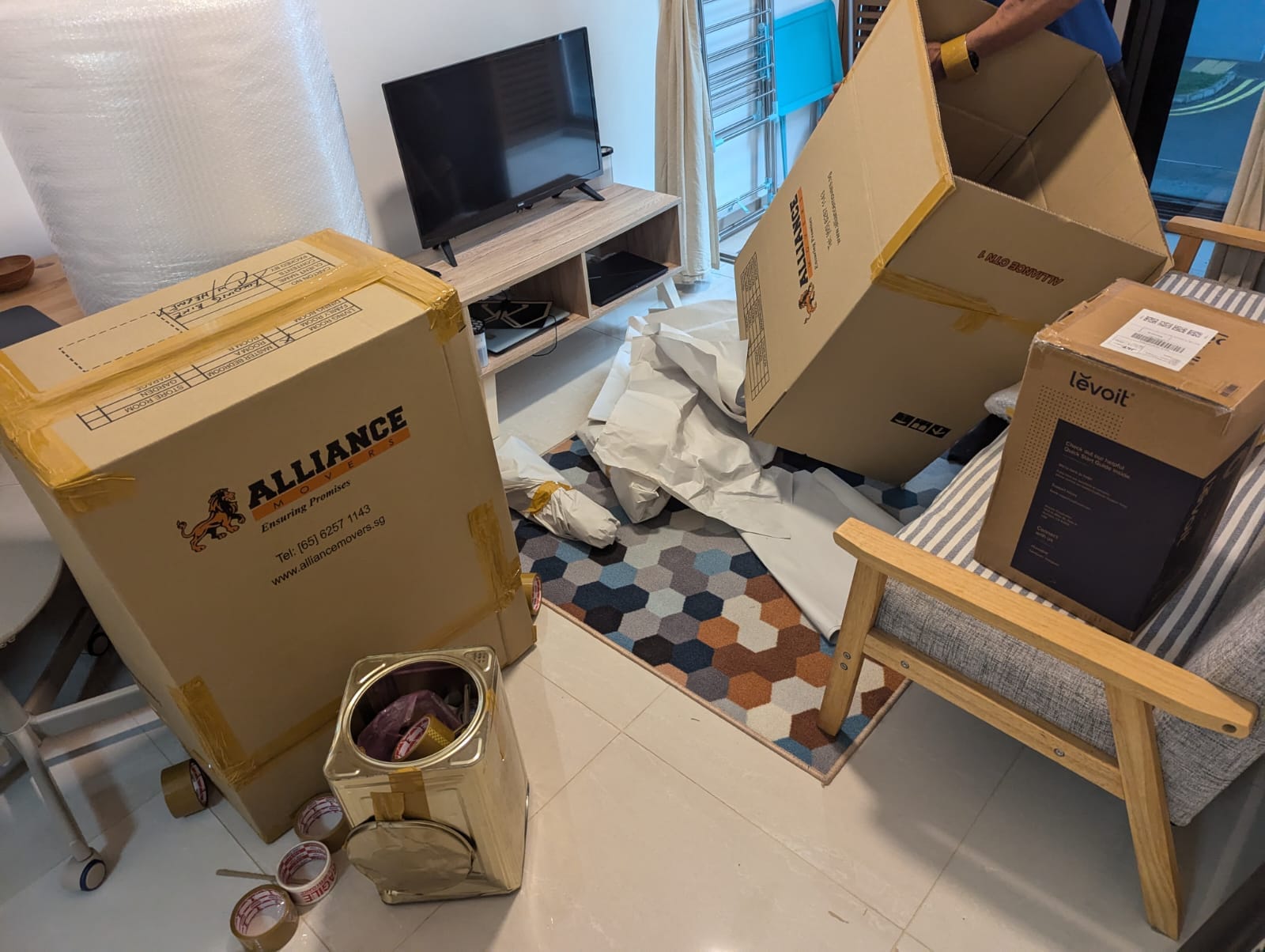
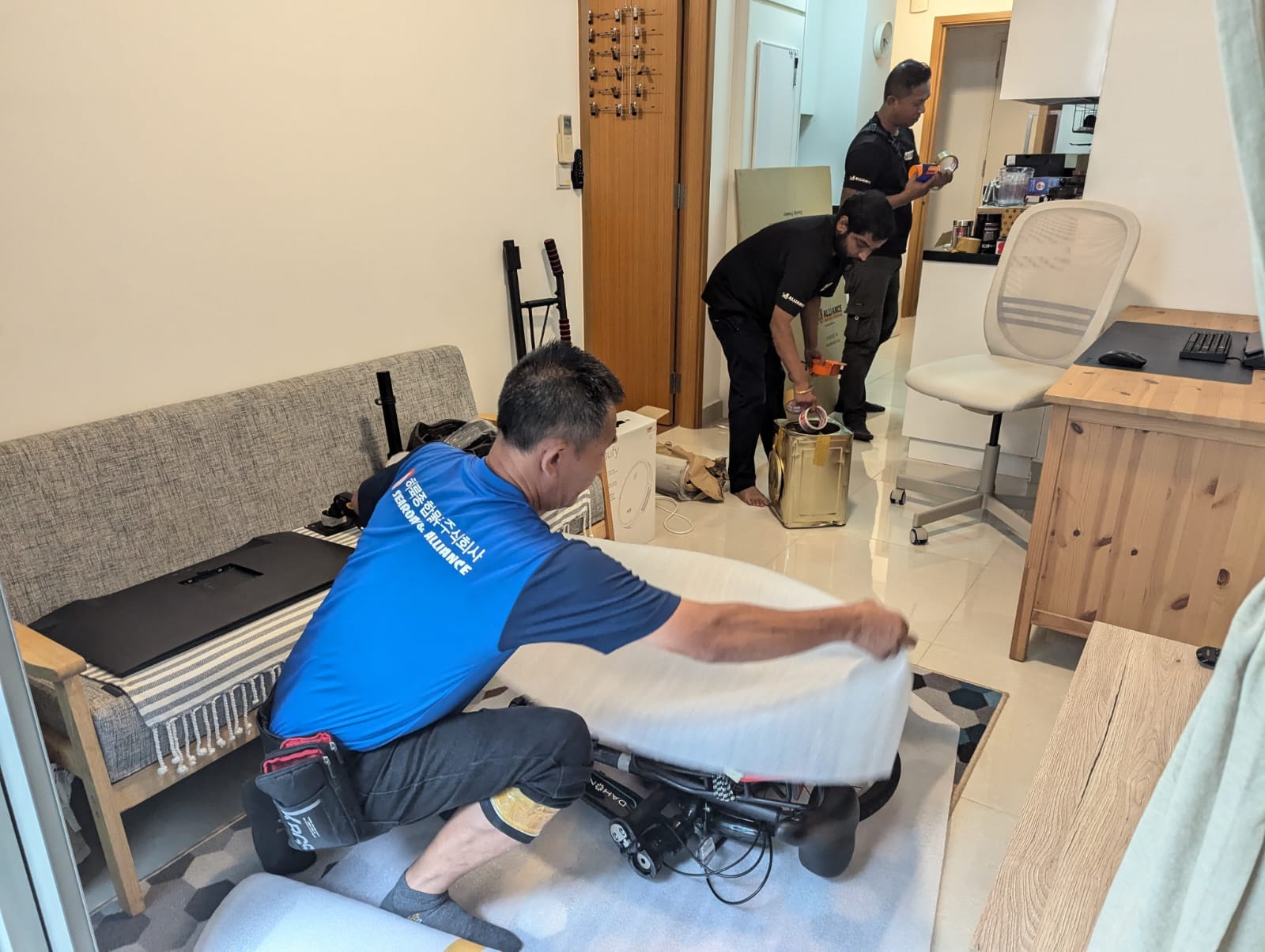
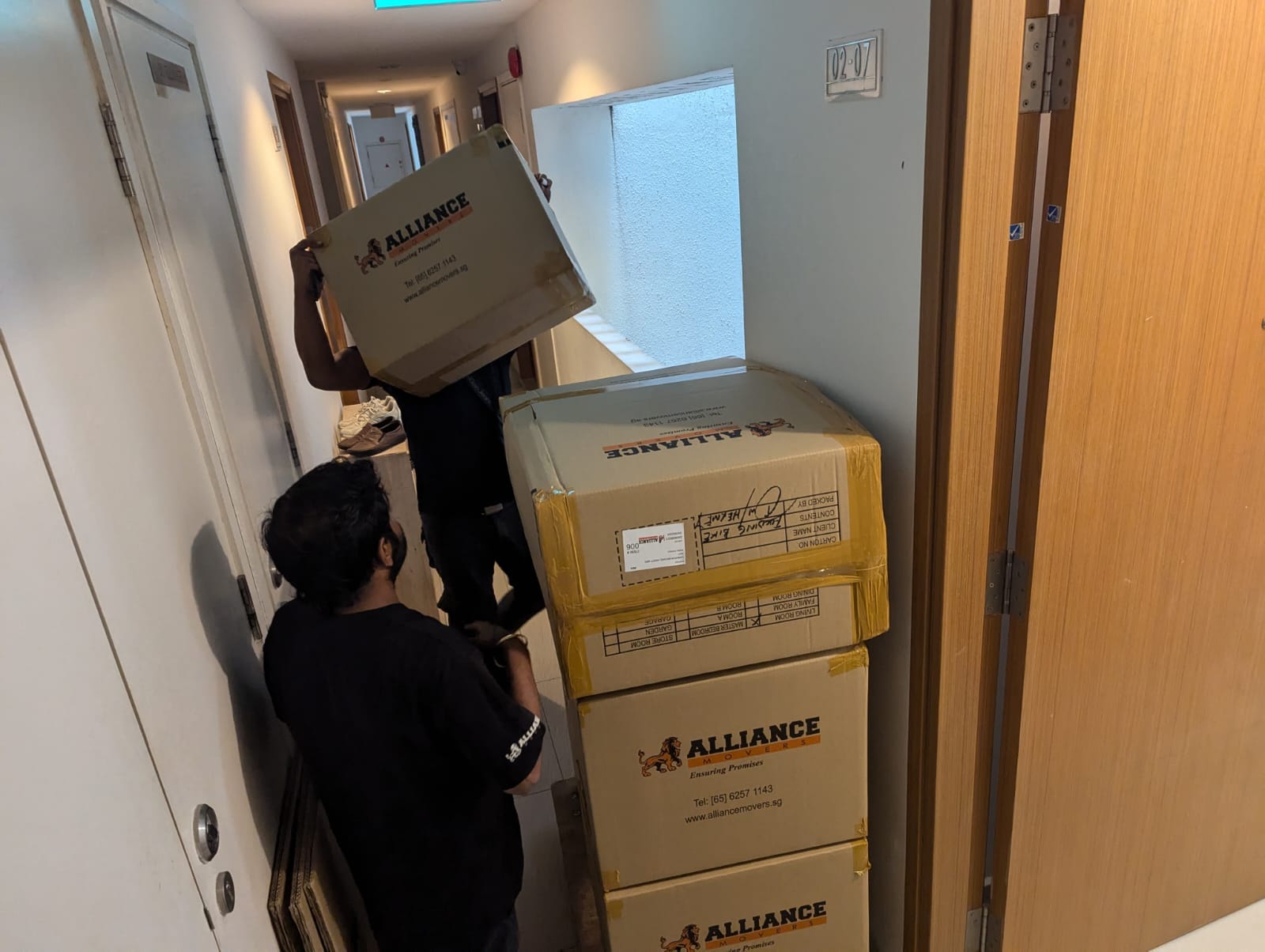
They took what I owned and put it in some boxes
The intricate dance of signing a lease / getting a phone / opening a bank account
When migrating countries there's a bit of a manoeuvrer to create your bank account, sign a rental lease and get a phone number. The sequence depends on the country. In Singapore, it usually goes: home -> phone -> bank, which means you'll most likely have to:
- Live out of a hotel or AirBnB for a few weeks, inspect apartments for rent, sign a lease, then pay your bond and rent using an international bank transfer, e.g. Wise, Monzo, etc.
- Use your newly signed lease, or associated utility bills, as proof of address to get a local phone number.
- Use your lease or bills, and phone number, to open a local bank account, then then loop back to step 1) to start paying your rent out of your local bank account.
This sequence isn't necessarily the same elsewhere, for example:
- In New Zealand, my sequence went bank -> phone -> home. I got a letter from my hotel stating that I 'lived' at the hotel. I used that letter as proof of residence to open a bank account. I used the bank account to get a local phone number. I used my local phone number and bank account to sign a lease.
- In France, my sequence was phone -> bank -> lease. I got a local phone number from a friend. I used my phone number to open a bank account. I used my phone and bank account to sign a lease.
Singapore is pretty good for your finances
Back when I lived in Australia, a friend and I were discussing house prices, as is the national pass-time, and she told me the only sure fire way she knew for Australians to afford a deposit was to work in Singapore for a few years. I laughed this off at the time, but I can now say, seriously if you want to afford a home in Australia you should go work in Singapore for a few years.
By the way, none of this is financial advice.
- Taxes are very low for expats. In Singapore I paid about 7% of my income in taxes, which is very low by global standards. In addition to this, Singaporeans must contribute up to 20% of their wage to the Singapore Government's Central Provident Fund (their employer also contributes); however, most expats aren't required to to make these contributions and you will have more discretion about how to use that money.
- Taxes are paid retrospectively. Your first year is 'tax-free' and you can put that money to work in an interest bearing account. You'll only pay tax on your income the year after you earn it, and you can pay in instalments, which keeps more of your tax money in your interest bearing account for longer. However, when you leave, all your outstanding taxes are taken out of your pay check at once. In my case, my work put a hold on my pay-checks before I emigrated to ensure my tax obligations were cleared. I didn't receive my final pay-check because it all went to paying my taxes, and my penultimate pay-check was only half my usual pay.
- Banks are all pretty meh. At the time of my arrival in Singapore, each of the big four banks had much lower interest rates on savings accounts than my Australian bank did. I first opened an account with OCBC, who I found to be 'mid' in terms of rates and UX. I later switched to DBS who also had meh interest rates, but at the least their banking app was much easier to use. If you want to get a return on your savings, I'd suggest investing your money rather than parking it in a Singapore bank (did I mention that non of this is to be construed as financial advice?).
- Financial scams are common and combatting them is a major focus of the government. This will undoubtedly impact you in that banking has many more frictions in Singapore than, say, Australia, because the banks are prompting you to reconsider sending money to potential fraudsters. You must also be extra vigilant to not fall victim yourself. The only thing I will add on top of the standard anti-scam advice is that when in doubt, screenshot suspicious messages and post them on r/asksingapore. For example, in 2024 I got an unexpected letter from the National Environment Agency requesting a call a number and arrange a time for them to inspect my apartment for mosquitoes breeding in stagnant water. I posted a photo of the letter on Reddit and the sub confirmed that it was a legit NEA letter with the real phone number - and that it was good to check these things.
- When you end your lease, transfer your utilities to the new tenant, don't cancel the account. This will save you a cancellation fee.
- Get a diplomatic clause in your lease. On a standard lease in Singapore you're on the hook for paying rent even if you break the tenancy (at least until the landlord finds a new tenant). However, you can request a Diplomatic Clause in the contract that allows you to break the lease with a certain notice period (mine was two-months) should you no longer have a job in Singapore. There's usually a minimum period before you can exercise the clause, depending on the life of the contract. This is standard for expat rental contracts, but not automatic, so you should check for it and request one. It'll save you big bucks should you ever need to break a lease.
Search for an affordable hospital pharmacy
One challenge I had in Singapore was getting medication. In Australia and New Zealand, I filled my Medicare-subsidised prescription at local pharmacies. In Singapore, however, I needed to go to a hospital pharmacy because local pharmacies stock far fewer medicines. The price at the hospital was, initially, wildly extortionate. My closest Singapore hospital charged $6.84 SGD per tablet, compared to $0.78 AUD ($0.68 SGD) per tablet in Australia. Meanwhile, another hospital located a mere 60-minute bus ride away would dispense a generic for only $1.07 SGD per tablet. Multiply the $5.77 SGD price difference across 365 days and that saved $2,106 SGD per year. Crikey. Anyway, speaking of bus rides...
Getting around Singapore is easy without a car
A friend of mine once observed that because Singapore is a highly unequal society, it's possible for expats to inhabit two very different bubbles. If you live the high-class lifestyle, Singapore is a great place for enjoying Michelin star restaurants, uncongested roads and luxury travel. However, just as readily, Singapore is a great place for enjoying incredibly tasty food for next to nothing, ride world-class public transport for a pittance, and make big contributions to your long-term savings.

The big dividing line in my experience is owning a car. Before you can own a car you must purchase a Certificate of Entitlement (COE), which merely gives you the right to own a car. COEs are auctioned by the government in an open market. If the government thinks that congestion has gotten worse, it will release fewer COEs until traffic improves. Once you have a COE you still need to buy the actual car which can be even more expensive.

So unless you're firmly in the 'rich expat bubble' you're not going to own a car. You're going to get around by bicycle, train and bus.
- Get your own bike. Rental bike schemes have taken off in Singapore the past few years. I occasionally used Any-wheel to ride from the train station to my home, but there are new operators entering the market. I found the bike quality quite poor, especially compared to London bike share schemes, which is really saying something. If you're going to do any cycling regularly, it's well worth getting your own bike.
- Consider a folding bike. Non-folding bikes are not allowed on trains or buses at all. Folding bikes are allowed, so long as they're folded up and fit within set dimensions. I suggest getting a bike second hand if you can. Tip: get a folding bike with a 'landing gear' to make it easier to trundle around when folded. Rebound Bike Shop near Paya Lebar was a great bike repair shop. I took my bike there every six months for a tune up and was very happy with the service.

- It's generally required to wear a helmet, but the rules are complex. It depends whether you're cycling on a road, a bike-path or a foot-path and whether your bike is powered or not. Consult the LTA because whatever I say will probably be out of date soon.
- Pay for public transport with your Singapore bank card or phone with the same. You can also get pre-paid MRT cards, but as an expat I only needed these for when I was waiting for my bank account / to give to visiting friends and family. You can get pre-paid MRT cards from the 7/11.
- Many MRT carriages have no seating. I hope you like standing.
- There's no reason to run for your train. The MRT operates on five minute frequencies during the peak (if not quicker!), in large part because there are no level crossings anywhere in Singapore. You will never have to wait long for a train. However, buses can be few and far between, so they can be worth a light jog to catch.
- Wearing a mask on public transport is normal and not a bad idea if you want to avoid getting sick. Even after Covid, about one in ten people on a given bus or MRT will be wearing a mask.
Enjoy many fine activities across the island
- The Projector is a fantastic cinema next to the Golden Mile Complex. You'll need to catch a bus there as it's a bit of an MRT dead-zone (except the Circle Line) but it's right next to Nicoll Highway so buses are frequent. The cinema is very cool, they do new releases, film festivals and classics. For instance, I saw Cabaret there during Covid. You can pay to become an annual member which, last I checked, is a net saving so long as you use all four of your free tickets and buy at least one ticket with a member-discount. Even if you never go, sign-up for their newsletter because the puns are wonderful.
- Bouldering and to a lesser extent rock climbing is surprisingly doable for a country with no mountains (yeah, you heard me Bukit Timah, you glorified hill). There are great climbing walls at the Lighthouse, Boruda, Boulder+ and Boulder World.
- Scuba Diving is very much a thing, just not in Singapore itself. Most dive centres own a timeshare on a beach in Malaysia for weekend getaways. There are also incredible dive sites across the region in Thailand, Philippines, Indonesia and further afield. Many dive clubs will arrange package tours. And of course you can refresh your PADI certification in Singapore, just don't expect your classroom to be a stunning reef (I refreshed my certification in a hotel pool).
- Cat cafes are a bit of a genre in Singapore in so far as there's heaps to choose from. If you've never been then it's worth it just once to enjoy an espresso in the company of a surly feline.
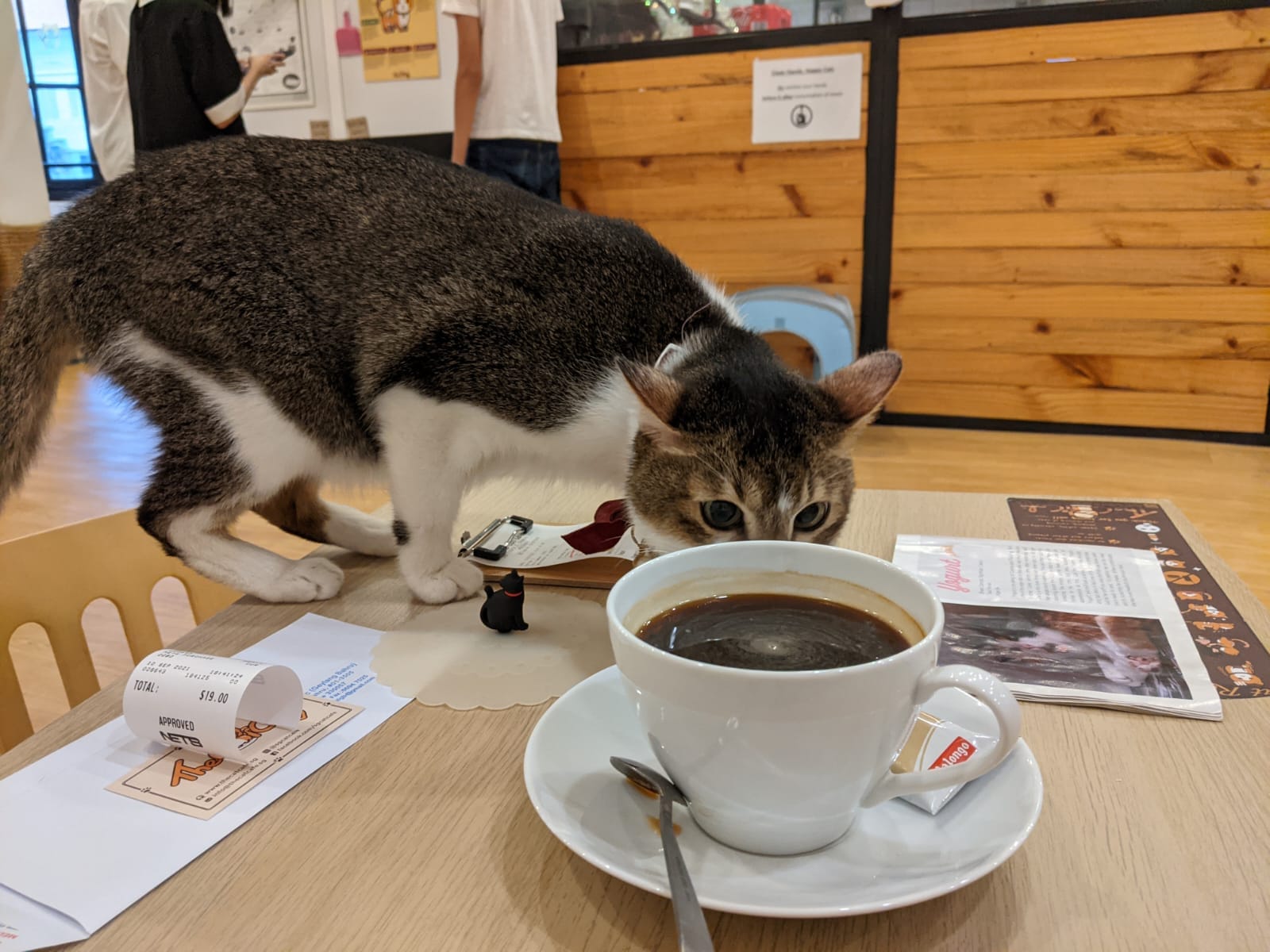
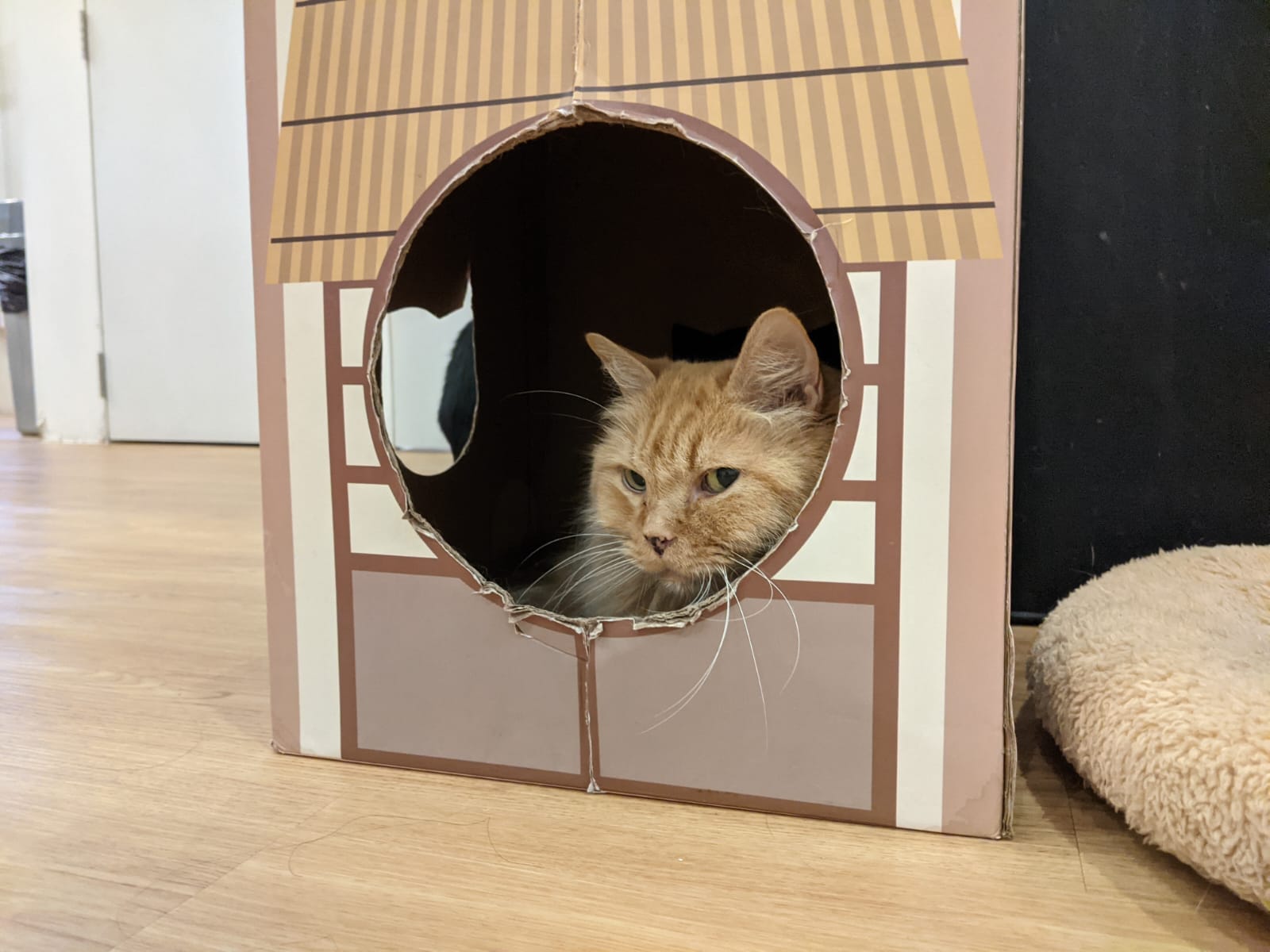
I'd be leery too, cat.
Singapore is humid, and humidity means mould
A big challenge I had coming from dry, arid, glorious Australia was that Singapore is 1 degree north of the equator, a humid part of the world where the air itself feels like thin soup. I had to up my mould-prevention game, and you will too:
- Run your air-conditioner daily. Do not run your AC 24/7 but make sure you do run it at least a little bit each day to circulate fresh air in and stale, mould-prone air out. I tried to minimise my AC use, but I would run it for at least 30 mins before bedtime to cool the room and ensure a daily turn-over of fresh air.
- Run your dehumidifier daily. Mould grows at 60% humidity and above, so keep the home dry. I left my dehumidifier on 24/7 and emptied it on weekends. You may consider turning yours off at night if the dry air makes it hard to sleep.
- Put dehydration packs in all your drawers and cupboards. These packs are filled with dessication crystals that absorb ambient moisture and pool it inside the plastic container. They need to be emptied and thrown out when the desiccants are all used. The most popular brand is Thirsty Hippo. You can get any number of different brands from almost all supermarkets in Singapore. They're a staple of the weekly shop.
- Run your ceiling fans regularly. Mould likes to grow in stagnant air and the fans will circulate the air to prevent it from stagnating. I left my fans on 24/7 except to clean them. My apartment didn't have ceiling fans when I moved in, but we negotiated with the landlord to install them as a condition of my moving in. I highly encourage you to do the same if your apartment doesn't have any. You'll be a huge fan in no time.
- Keep the curtains open. Sunlight kills mould, so leave your curtains open as much as possible.
- Run an air purifier often. I'm told that air purifiers catch ambient mould spores and purge them before they settle. However, if you're doing all of the above then your home shouldn't be conducive to mould growth when the odd spore does enter your home. That said, I ran my purifier every day and if you have a purifier there's no harm in using it.
- Leave stuff with your friends or at work when you go on holiday. One problem with all the above counter-measures is that you can't do them while you're on holiday. Every day you spend in a foreign locale is another day when those devious mould spores can take root in your precious home. However, most workplaces in Singapore run their AC on regular schedules so mould is extremely unlikely to grow there. If you're going on a long holiday, then you could leave some things you're worried might catch mould at the office instead of at home. In my case, I left my suits and shoes at the office when I went overseas for extended periods of time.
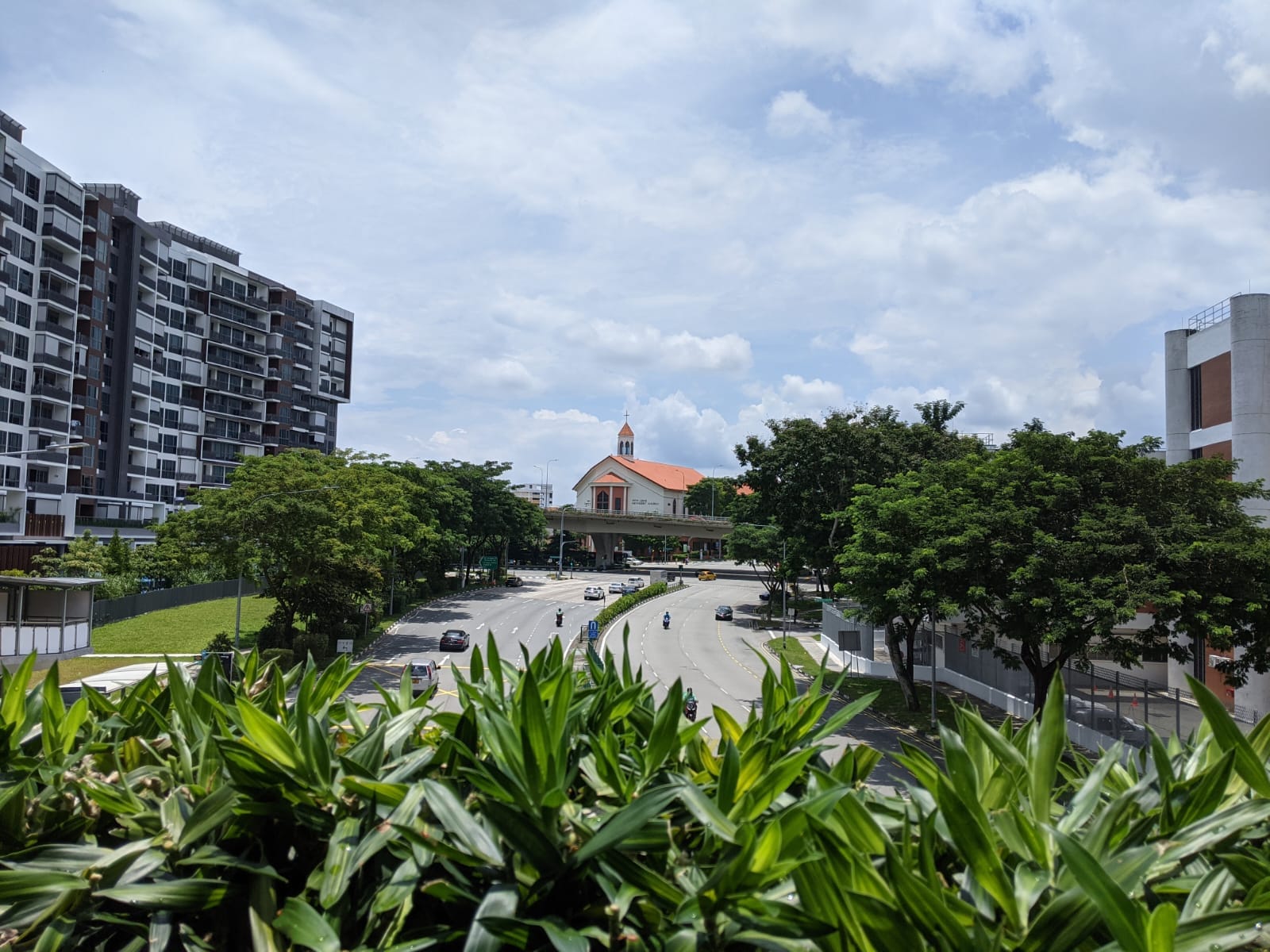
Singapore's surprisingly good for menswear aficionados
My final piece of advice, which is last but not least, although quite likely of narrowest appeal, is that you can enjoy a lot of great menswear in Singapore if that's your thing. The climate is hot and humid (see above) so you'll be wanting summer fabrics like linen. Singaporeans are also very firm on taking your shoes off to enter homes, so slip-ons like loafers are a big plus. And most buildings will blast the air-conditioner so having a jacket to keep warm is useful.
- Seamless Bespoke does tailored shirts, suits and ready-made shoes. I got a cotton-linen shirt here. It was the most I'd ever spent on a shirt but the it is by far the best fitting shirt I own. If you go to any other shirt maker, I suggest getting one shirt from Seamless Bespoke and then wear it to your other tailors as the 'template' they should work around.
- Yong Seng Shirt Company. These guys do great shirts and they were my go-to tailor in Singapore. They're based out of an industrial estate in Eunos, which is a quintessentially Singapore place to run a business. Send them a WhatsApp to arrange an appointment then take the service elevator up to their studio.
- Rossi are suit makers whose suits I've been very happy with. They have a very good eye for detail and can talk you out of any stylistic mistakes you might make (e.g. "Pink would be a bold choice for this suit, sir, I would recommend peach if you want to stand out in a good way."). To give you a sense of their attention to detail, for my first suit I requested an inner-pocket in my trousers to hold my phone. When the suit arrived, the inner-pocket was the perfect fit for my phone. However, when I went for a second suit, I requested another inner-pocket but forgot to mention that my phone now had a case that made it too large for the first suit's inner pocket. Yet, when the new suit arrived, its inner pocket was the perfect size for the phone in its case. I'm convinced that they measured my encased phone while I was in the change room and updated the pocket measurements without my even having to ask. Just incredible.
- Kay Jen are a suit maker I've not used but my stylish Singaporean friend has a sports coat from them that he loves. I follow them on Instagram and their suits tend to be more casual and sporty which I think is just right for Singapore.
- Collaro are an all-round tailor with a wide selection of materials and cuts but meh customer service, in my experience. You have to know what you want because they won't help you choose. For instance, I came in for a fitting on some trousers and I asked the staff whether the waist looked too tight or too loose, seeing as the pants would be worn with a belt. He simply said, you tell me sir, I just process the order. By contrast, when I discussed my trouser's waist at Rossi, the staff pointed out "well the belt you're wearing now is at its tightest notch and there's a bit of a crease in the fabric, so we could cut the pants a bit tighter seeing as that's how you seem to wear them?". Therefore, I only recommend Collaro if you know exactly what you want and don't rely on your tailor for their advice (which is, frankly, one of the most important services a tailor provides).
- Jalan Sriwijaya is an Indonesian shoemaker with outlets in Singapore. Their shoes are really nice in my experience. I've had a pair of brown leather chukka boots for nine months that I wear at least once a week. Very affordable and high quality.
- CNES is another shoe maker, a little more upmarket than Jalan Sriwijaya. They appeared on Gentleman's Gazette which is how I heard of them. I've not gotten a pair from them yet but the staff were very knowledgable when I spoke to them in store and I'm keen to try a pair one day.
- Vanda fine clothing have made all my ties and pocket squares. Their ties are just fantastic, I love wearing them. The staff operate out of their home in south-east Singapore and I highly recommend stopping by for at least your first order. Wear your suit that you'll pair the ties with because they have a great eye for matching the colours and patterns. You can also simply place your order online, but I think you make a better selection if you go in person. Note that all of their ties are made without the loop at the back for keeping the narrow blade of the tie in place, so your tie will hang loosely (which is more casual and rakish) unless you pin it down with a tie clip.
That's the long and short of my hard won lessons living in Singapore. If you make the move yourself, I hope that this advice helps you and that you add to it with your own wizened experience. Living in Singapore is, as they say, die die must try.
